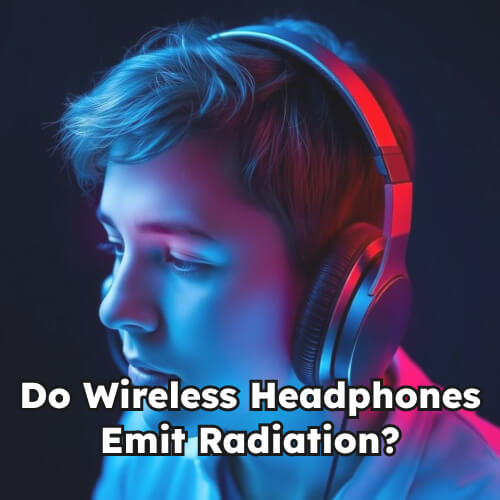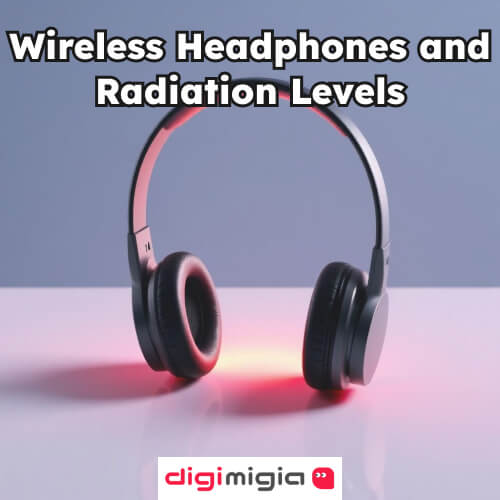Do Wireless Headphones Emit Radiation?

Bluetooth wireless headphones are a common tech upgrade, but many people are unsure if using them is harmful to the brain. Bluetooth does produce some kind of radiation, but that doesn’t mean you need to worry about your wireless headphones. Do wireless headphones emit radiation? The U.S. government creates rules about how much radiation devices can give off. These rules apply to products people use every day such as wireless headphones. There are other sources of information about radiation besides the EPA. Wireless headphones send out much less radiation than the limits set by the government, even if they are right next to the skin. However, let Digimigia give you more information about wireless headphones in this blog.
Wireless Headphones and Radiation Levels
No matter what kind of headphones you use, it’s important to know about the health dangers that are closer to you than small amounts of radiation. If you’re wearing earbuds and listening to loud music while walking, and then you suddenly step into traffic, that’s much more dangerous than a possible cancer that might happen in 20 years. Do wireless headphones emit radiation? Is Bluetooth radiation harmful? Bluetooth devices, like headphones, send out a kind of radiation called non-ionizing radiation. This type of radiation is part of the radiofrequency (RF) spectrum, which is common in everyday electronics. Bluetooth headphones release low levels of RF radiation, much less than what cell phones give off. The radiation from Bluetooth headphones isn’t harmful and stays well within the safe limits set by government rules.

Comparison with Phone Usage Radiation
In order to help you understand better, let’s compare how much radiation Bluetooth headphones and cell phones give off. Cell phones give out more radio frequency (RF) radiation because they need to send and receive signals over long distances. That means Bluetooth headphones have much less radiation compared to cell phones.
What Do Health Authorities Say?
Are Bluetooth Wireless Headphones Safe for Your Brain? The Apple AirPod antenna, which sends and receives radio waves, is not located inside the ear canal. Rather, it is in the part that stays outside and hangs below the ear. However, to lower your exposure, you can turn off wireless devices when you aren’t using them. Foster suggested stopping the use of wireless tech if you want to be extra careful. Instead, use wired headphones. “You should also know that you’re getting the same kind of exposure from your cell phones and other Bluetooth devices,” Foster said.

Wired or Wireless: Which is Safer?
In a world where wireless tech is everywhere, more people are wondering if the devices we use daily are safe—especially wireless headphones. Are wireless headphones safe? And even more importantly, are wired headphones safer than wireless ones?
- Wired headphones connect straight to your device through a 3.5mm audio jack, USB-C, or Lightning port. They send sound as analog signals and don’t give off radio frequencies.
- Wireless headphones, like Bluetooth or radio frequency ones, connect to your phone, tablet, or laptop without wires. They’re easy to use and don’t have cords to get tangled, but they do send out a little non-ionizing radiation.
This is a topic that people often argue about and they ask “Is Bluetooth headphones harmful for brain?” Bluetooth uses a type of radiation called non-ionizing, which doesn’t have enough power to harm DNA or cells directly. But some people still worry about it. Some research says that being exposed to radio frequency electromagnetic fields, even at low levels, might be harmful over a long time. However, groups like the World Health Organization and the FDA say there isn’t enough clear proof that Bluetooth headphones cause health problems. Because of this, some people choose wired headphones instead, thinking they are safer, especially when using them for a long time.

Radiation Exposure: Wired vs. Wireless
Here is the comparison of wired vs wireless headphones radiation:
- Wireless headphones give out RF-EMFs when they are working. They are often used right next to the brain. They use the 2.4 GHz frequency, which is the same as Wi-Fi. They use Bluetooth Class 1 or 2, and they have different levels of power, from 1mW up to 100mW.
- Wired headphones do not send out any radiation. They just pass along electrical signals. They do not expose the user to RF or microwave frequencies.
In conclusion, wired headphones are clearly safer when it comes to radiation exposure.
Conclusion
In this blog on Digimigia, we tried to let you know about ‘Do wireless headphones emit radiation?’ Although experts say there’s not enough research yet, but most believe the radiation from wireless headphones isn’t dangerous to your health. If you’re worried, you can use wired headphones instead. Whether you use wired or wireless headphones, it’s good to take care of your hearing and safety by using them less, keeping the volume lower, and staying aware of what’s going on around you.

